
What in the world was that coffin dance funeral video?! 🕺⚰️
That is most people’s reaction to the viral coffin dance meme. I was also in the same boat (…no, not coffin)- scratching my head over the enthusiastic pallbearers getting down on all fours. Was it actually real? Do people actually hold energetic funerals like this?
I have heard that grieving looks different for everyone, and various cultures have their own rituals. How do people around the world really deal with death? Let’s explore a few ways the living say goodbye to their loved ones.
- A Ghanaian Funeral to Global Meme Fame 🇬🇭
- What’s the Real Story Behind the Coffin Dance?
- Mourning in Ghana
- Kusang Ren: Professional Funeral Mourners in China 🇨🇳
- China’s Crying-for-Cash Industry 😭
- The Business Side of Grief 💰
- Funeral Strippers?!
- Sin Eaters: Medieval Europe’s Strangest Job Description 🍞
- The Unfortunate Spiritual Scapegoats
- Why This Job Was Social Suicide
- Tibet’s Sky Burial: The Ultimate Eco-Friendly Send-Off 🏔️
- Can You Actually Visit These Ceremonies?
- The Universal Need to Process Loss
A Ghanaian Funeral to Global Meme Fame 🇬🇭
What’s the Real Story Behind the Coffin Dance?
Let’s be honest- when those Ghanaian dancing pallbearers first hit your social media feed during the COVID-19 pandemic, you probably did a double-take. Here’s the thing though: this isn’t just dark comedy meme, it is someone’s actual funeral!
The pallbearer group Nana Otrafrija Pallbearing and Waiting Service is based in Prampram, a city in southern Ghana. The founder, Benjamin Aidoo, started his business offering regular coffin-bearing service in 2003. This soon changed when he added dancing as an option, for an extra charge.
The morbid dancing went absolutely viral in early 2020, to the soundtrack of EDM song Astronomia. The energetic team became the most famous pallbearer group in the world because of the popular clip.
Interestingly, Aidoo confessed that it was an accidental invention. In 2012, he spontaneously moved to the beat of the drum while carrying a coffin. The crowd cheered for him, and started throwing money instead of crying. That day is the fateful beginning to the remarkable dancing service.
Mourning in Ghana
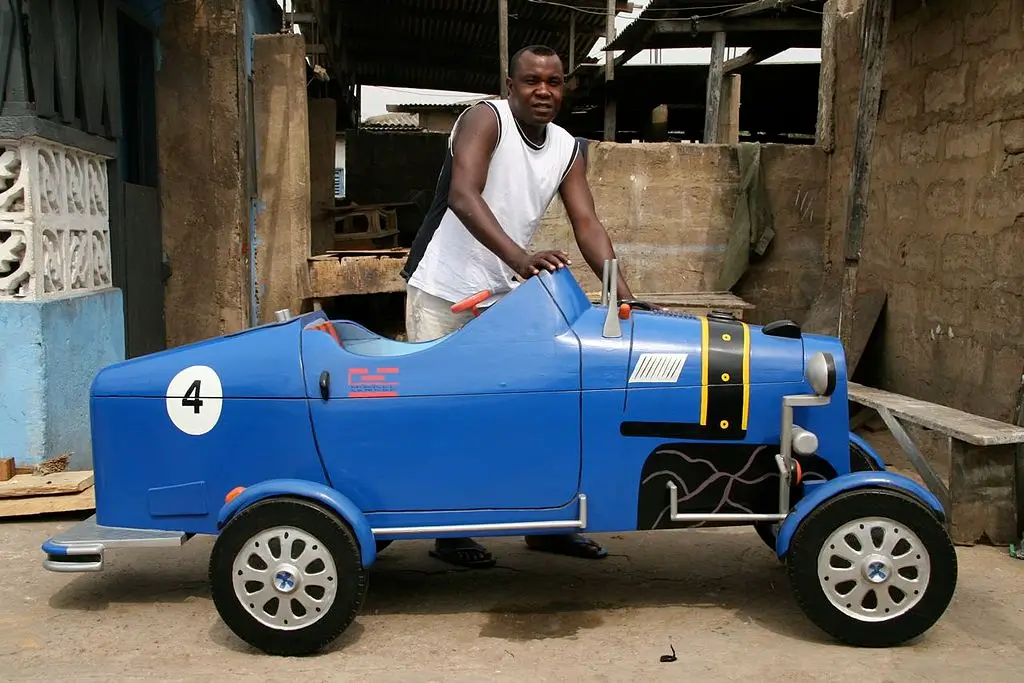

While most cultures treat funerals like the most somber of events, Ghanaians decidedly throw a party to celebrate the deceased. The Ga people of Ghana believe death should be met with joy and celebration, especially if someone lived a full life. Revolutionary? Absolutely.
The Ga people bury their deceased in very unique (and sometimes outlandish) fantasy coffins. A pineapple seller was buried in a pineapple-shaped coffin, for example, and a crab-shaped coffin was crafted for a builder with the nickname “Crab” 🦀. From fish, pencil, to elephant-shaped coffins- the Ga people have celebrated them all.
“Bring out a dance, and people stop crying.” said Aidoo, expressing that the service boosts morale for the grieving. I guess that is one way to fight the tears, by laughter and joy in the face of life’s duality. Oh and some money-throwing doesn’t hurt the pallbearers either.
The cultural philosophy is actually mind-blowing when you dig into it. Death represents a transition to the afterlife, not the end. Community celebration helps everyone heal together. Professional mourning becomes an art form. And colorful coffins shaped like cars, fish, or phones are totally normal and meaningful representations of the deceased’s life.
Kusang Ren: Professional Funeral Mourners in China 🇨🇳
China’s Crying-for-Cash Industry 😭
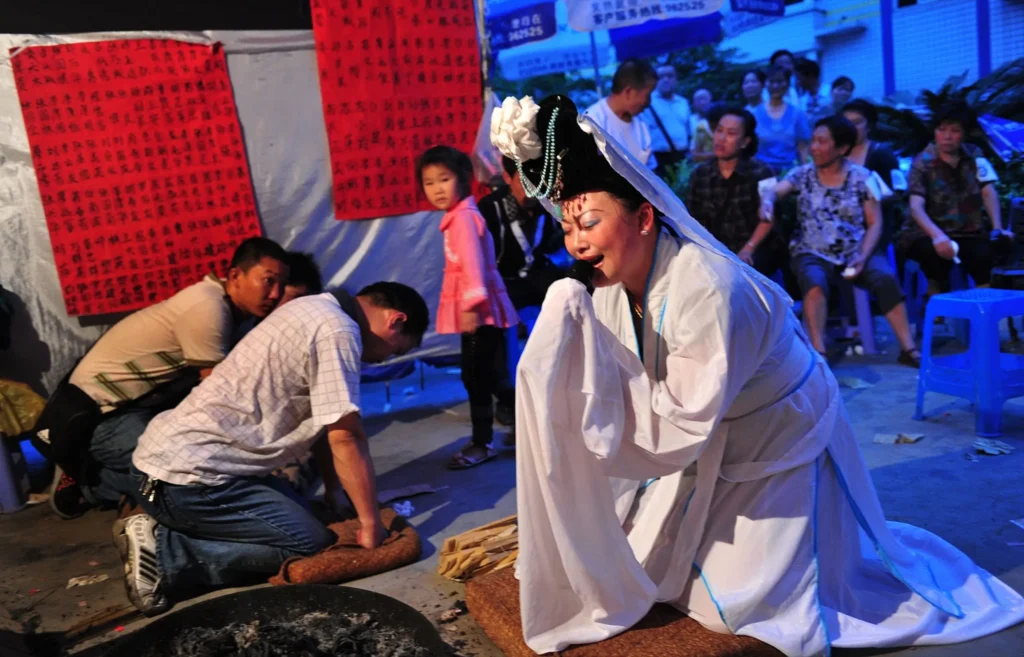
This service might seem strange for those residing in a different part of the world. In China, professional mourners have been a thing for 2 millennia (yes, TWO THOUSAND YEARS!!). The tradition dates back all the way to the Han dynasty. They do not just come to show up and look sad- they’re skilled performers who can produce tears on command. Hollywood-level performance, but for your neighbor’s funeral.
Professional mourners wail dramatically during funeral processions and perform choreographed grief displays. Sometimes they even strip or throw themselves on the ground. They get paid handsomely for their emotional labor, turning grief into a legitimate profession that requires real skill and sincere dedication.
The Business Side of Grief 💰
Plot twist: this isn’t just about tradition, it’s about face (mian zi, 面子) and show of power. In modern China, hiring professional mourners has become a status symbol. The more elaborate the mourning display, the more respected the deceased appears. A grand send-off for an important person. As if their deeds in life are too great, too meritorious for the living to ever let them go to the other side.
The economics are fascinating, honestly. Professional mourners can earn significant money, especially for high-profile funerals. They role play as grieving parents or children, giving custom eulogy speeches on the dead’s accomplishments. The sad howling has to follow three requirements to satisfy their (living) clients: sincere tears, appropriate timing, and high emotional impact for the attendees.
They are essentially both actors and grief consultants. Professional mourners help families navigate the complex social expectations around death and mourning. The funeral also has to be done in ways that honor both tradition and modern sensibilities.
On the other hand, these professional wailers are also stigmatized for their profession. In Chinese culture, funerals and death are taboo- bad energy, basically. Those who engage in this profession cannot attend social events such as weddings, big family dinners, even cultural festivals. The yin energy from death is viewed as unlucky for grand or happy events.
Funeral Strippers?!
A modern twist on this tradition also rose to internet infamy: funeral strippers. Yes, you read that right: exotic dancers for your dead loved ones. One event in Chongqing has both professional mourners and exotic dancers. A family member of the deceased said that the vibrant spectacle is essential, as other villagers will view the family poorly if it is not done. The social pressure to “respect the elders” shapes how funeral rites morph over time.
Mostly practiced in Taiwan and rural China, these dancers boost attendance and shows off the family wealth. This also has been around for a while, at least since the 1980s in Taiwan. The Chinese Ministry of Culture issued a crackdown on this practice in 2015- at least on the Mainland China side.
Sin Eaters: Medieval Europe’s Strangest Job Description 🍞
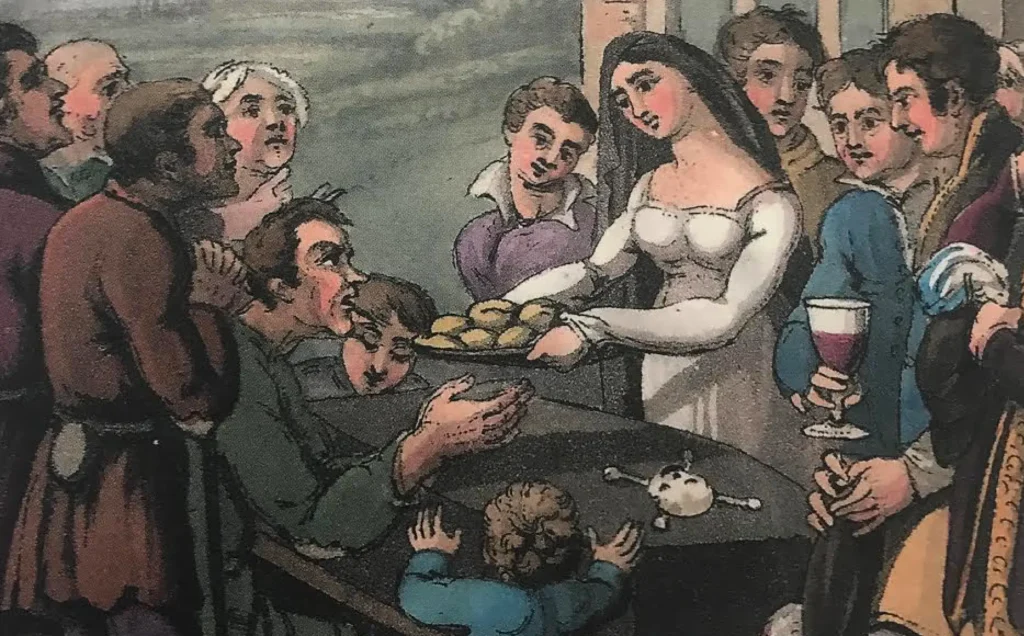
The Unfortunate Spiritual Scapegoats
What are Sin Eaters? These folklore figures are commonly found in Welsh tradition, and it is believed to be pagan in origin. Imagine being so desperate for work that you’d literally eat someone’s sins for a few coins. These people were called sin eaters.
Here’s how sin eating actually worked: a poor person would show up at a deathbed, eat bread and drink ale placed on the corpse. This is a symbol for consuming the deceased’s sins they had not confessed. They’d get paid pennies and become spiritually “unclean”, a social outcast forced to stay in profession by poverty. While ironically the dead person could now go to heaven in peace, without the sins they committed.
Why This Job Was Social Suicide
Sin eaters lived as outcasts because everyone believed they carried the sins of the dead. Talk about the ultimate career sacrifice! They were essential to the community but treated like pariahs. The irony is almost too much to handle- society needed them desperately but couldn’t stand to be around them. Stuffing their sins away just like garbage- out of sight and out of mind.
The psychological toll must have been incredibly devastating. These individuals essentially became walking repositories of guilt and shame, all so others could find peace about their loved ones’ eternal fate. It’s a reminder of how far humans will go to manage their anxiety about death and the afterlife.
Sin eating have now fallen out of custom, and the last known sin eater had died in 1906.
Tibet’s Sky Burial: The Ultimate Eco-Friendly Send-Off 🏔️
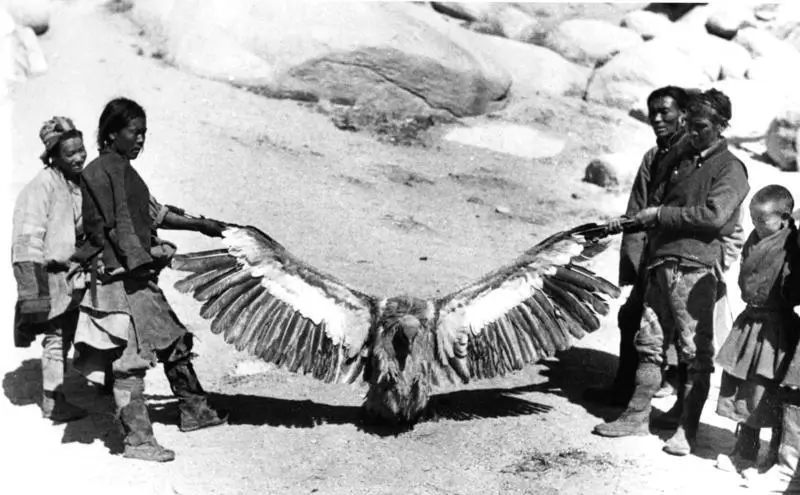
Tibetans take “returning to nature” to a whole new level in the sky burial custom of Jhator. When a Tibetan passes away, the body is first covered with traditional cloth and prayed upon by monks to release the soul. Then, the body is then dragged up to the top of a mountain, chopped up, and left on mountaintops for vultures to eat.
Sounds macabre? Interestingly, the practice reflects Vajrayana Buddhist beliefs about the impermanence of the body and the importance of generosity.
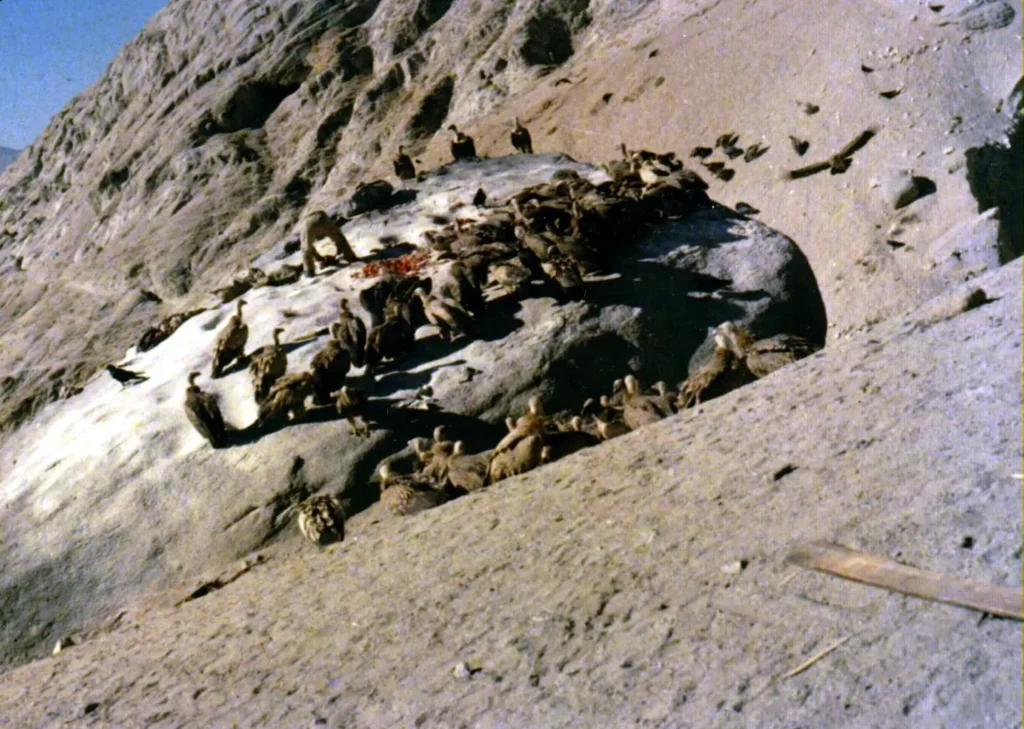
After someone’s passing, the body is an empty vessel. As the vultures are viewed as holy birds, the bodies’ consumption means that the human’s soul has gone to heaven. The deceased gives their final gift to the natural world, feeding the birds and completing the cycle of life.
It is actually practical because of the difficulty of burial in rocky and hard terrains. Additionally, it is also profound- signifying that the soul has moved on, so why not let the vessel serve another purpose?
These days, sky burials are more expensive than cremation. Among many other factors, like the diminishing number of vultures and restrictions near bigger cities, the number of sky burials has been decreasing year over year.
Can You Actually Visit These Ceremonies?
Here’s the thing – most of these rituals aren’t tourist attractions, and honestly, that’s probably for the best. Sky burials, for example, are sacred and visitors (even the families of the deceased) are not allowed to come. Interfering on this burial practice is viewed as hindering the ascension of the soul. But if you’re genuinely interested in cultural experiences around death and mourning, there are respectful ways to learn.
You can visit museums with cultural exhibits, take guided tours with proper context, and attend public celebrations like Mexico’s Día de los Muertos. What you shouldn’t do is crash private funerals for Instagram content, treat sacred rituals like entertainment, or make fun of cultural practices you don’t understand.
The key is approaching these topics with genuine curiosity rather than a “look-at-what-they’re-doing” judgmental view. Cultural sensitivity around death practices isn’t just a nice-to-have- it’s essential for respectful travel and meaningful cultural exchange.
The Universal Need to Process Loss
Whether you’re dancing with a coffin in Ghana, hiring someone to cry in China, or having your sins eaten in medieval Wales, every culture has figured out that grief needs community support. We are all just making it up as we go along, trying to make sense of the mystery of death.
The fascinating part is how creative humans get when faced with loss. Some cultures celebrate, others mourn intensely, and some find ways to maintain ongoing relationships with the dead. Yet, they all recognize that grief is too big for individuals to handle alone.
Even though it comes with the implication on maintaining social standing, the importance of community is still an important factor in these grieving rituals. Community support during loss of a loved one is universally needed, even if the methods vary wildly.
Ultimately, dealing with death is a business for the living, coping with what is now their permanent reality. Have you encountered interesting mourning rituals in your travels?
Discover more unique takes on current news and What Happened To.
